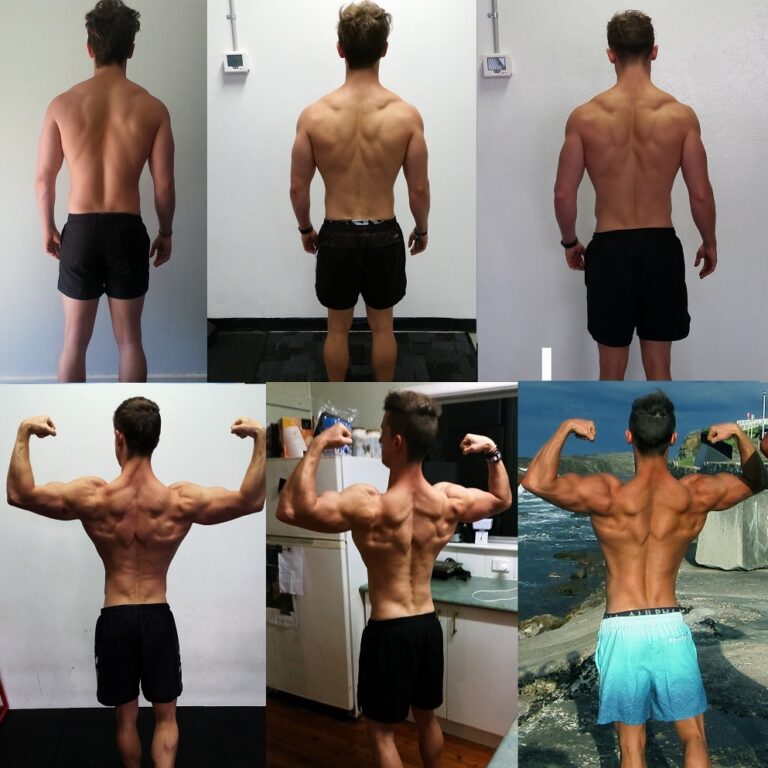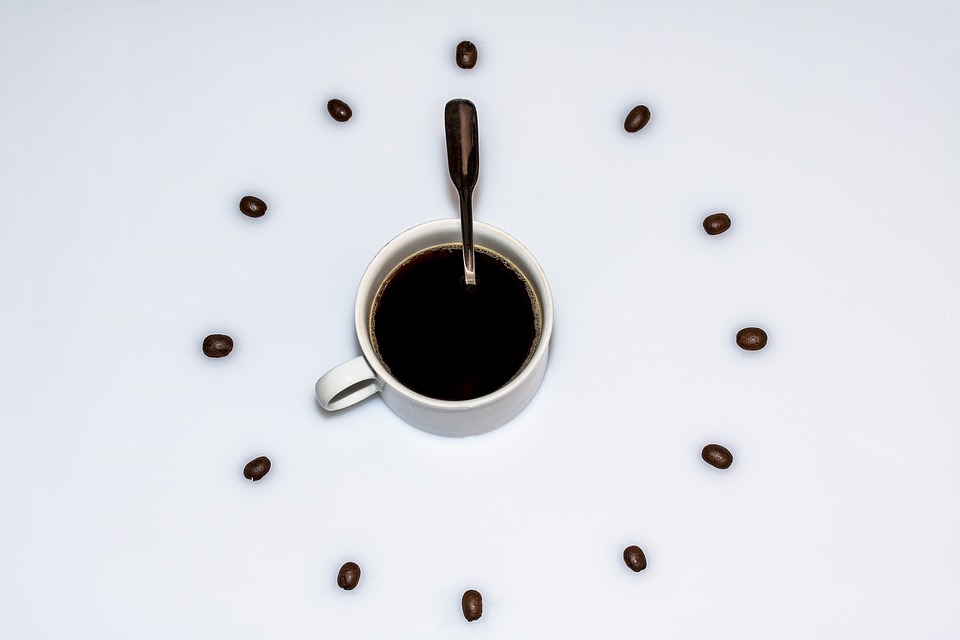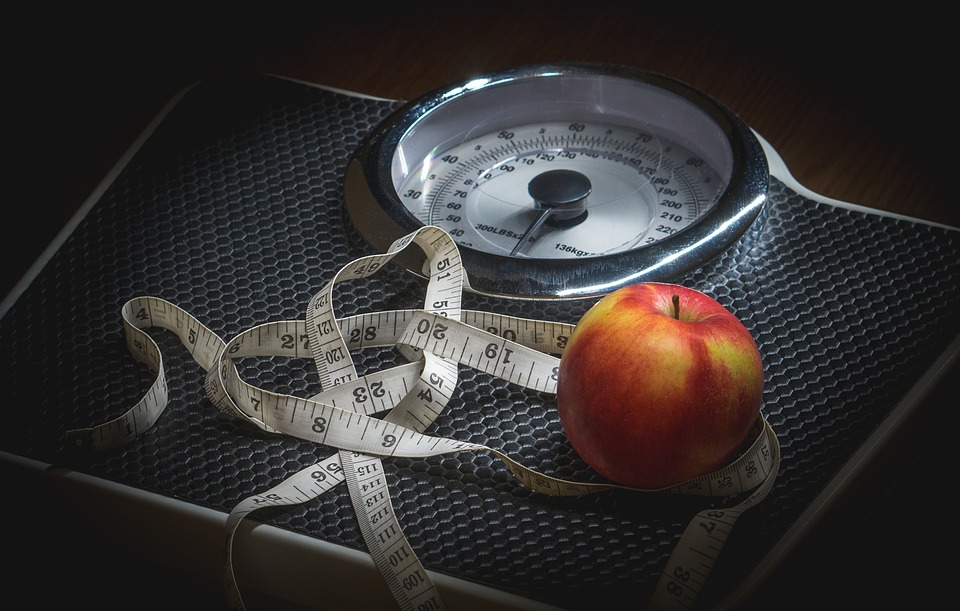5 Foods That Help You Have a Healthy Life
Health is a major concern in today’s fast-moving world. We are all consuming fast food

5 Foods That Help You Have a Healthy Life
Health is a major concern in today’s fast-moving world. We are all consuming fast food

Learn how to properly use this humble lump of iron and achieve a new level of strength and fitness.
Guest Author: Alex Goik
Chances are that if you train — or maybe even if you don’t — that you’ve come across an irregular shaped lump of iron being swung around by someone in the gym.
The lump of iron is called a Kettlebell and in my eyes, it’s one of the most critically misunderstood and under-utilized pieces of equipment in the modern strength and conditioning toolkit now available to us.
From the outside looking in Kettlebell training can appear cumbersome, awkward, and daunting to incorporate succesfully into a training regime.
Indeed this characterisation isn’t entirely wrong.
A degree of skill and an understanding of body mechanics is required to unlock the Kettlebell’s full potential. In order to become truly adept, the tool demands an investment of time and patience from its user.
But when you do become adept, the breadth and diversity of your training expands dramatically.
And with expansion of training protocol comes tangible benefits to your strength, conditioning, mobility and coordination among a host of other perks.
Approaching athletic performance from a background in combat sports, I have always been cognizant of the need to satisfy four primary objectives.
Power, coordination, functionality and conditioning
How hard and fast you can hit, takedown, and submit is predicated on the metric of power. The general consensus within athletic performance circles is that power can best obtained through proper periodisation of heavy barbell training using compound movements (your bench press, deadlift and squat) followed by a focus on plyometric exercises (your medicine ball slams, depth jumps and explosive push-ups).
Coordination relates to maintaining balance and stability while performing athletic manuevers and the development of correct timing.
Functionality relates to how the strength and power developed through resistance training translates over to performance in your respective physical pursuit. This can be achieved through a combination of sport specific drills and non traditional exercies. If you’ve ever seen athletes perform tyre flips, swing around battle ropes, or push a loaded sled, these exercises are designed to mimic movements found within the designated sport and develop practical strength.
As explained by Coach Joel Jamieson, author of ‘Ultimate MMA Conditioning’, conditioning can be defined as your “maximum sustainable power output throughout the duration of the event”. Or Inother words, how long you can keep up a high level of power output before gassing out.
Striving to attain a good balance between all four of these objectives is an important goal for both combat sport athletes and athletes in general.
But these are also fantastic metrics that the average individual who just wants to get fit, add some muscle, or improve their mobility can use to gauge their overall fitness progress.
And Kettlebell training — if done correctly — ticks all four of these boxes.
The true strength of the Kettlebell lies in its malleability.

It teaches you how to be stable and transition through movements while maintaining tension, promoting good posture and improving the integrity of your joints.
Using the correct weight, it develops both your strength and explosive power and encourages you to use correct body mechanics.
It develops coordination, flexibility and grip strength, (grip strength having been proven to be a “vital sign” of health and vitality in middle-aged and older adults.)
Through the incorporation of Kettlebell complexes or ‘flows’ that combine several exercises in one seamless movement pattern, using Kettlebells can drastically improve your cardiovascular fitness.
Finally, Kettlebell training teaches you to generate power in awkward and non-linear positions using your whole body as one integral unit. This is a vital component of a large number of atheltic endeavours, yet a factor that is often overlooked in traditional strength training.
Let’s now look to some specific Kettlebell exercises to ratify these claims.
The swing is the staple movement in Kettlebell training. Indeed Tim Ferris in his book ‘4 Hour Body’ refers to the Kettlebell swing as a ‘magic’ exercise.
Your hips, glutes and hamstrings are the power generators involved in virtually all forms of movement incorporating lifting, running and jumping. For many of us who live a sedentary life however, these muscles are left critically under-utilized and underdeveloped.
The Kettlebell swing is a ballistic movement and stimulates the whole of your posterior chain — the group of muscles on the back of your body including your glutes, hamstrings and spinal muscles. A swing is thrust forward by your loaded hips, rather than pushed into place.
The Kettlebell swing can therefore develop power, coordination and functionality depending on how you choose to implement the technique into your training regime.
The swing can also be approached as a recuperative exercise for those experiencing lower back pain. This is owed to the reversal of negative energy on the spine and the lower weight which is used in a swing in comparison to exercises such as the deadlift that are strenuous on the lower back if not performed correctly.
For a more complicated breakdown of the Kettlebell swing I reccomend viewing this clip.
The Turkish get up is a multidimensional and complex movement. I don’t recommend trying this exercise until you have mastered the correct technique without weight.
In saying this, performing a Kettlebell Turkish get up is arguably one of the best things that you can do to strengthen your body and encourage it to work as a cohesive unit.
The two greatest challenges of this movement are to your grip strength and overhead stability. Holding a weight overhead and progressing through various planes of motion is extremely taxing on your shoulder, hand and wrist. Performing each section of this movement correctly also requires a high degree of coordination, mobility and core engagement.
With the Turkish get up, you will quickly become aware of strength deficiencies and the stages of the movement that you feel weakest. The exercise is therefore a good barometer for gauging how well your body articulates itself as a unit, guiding you to focus on areas of your body that need improvement.
For those martial artists out there, I have found this exercise to be invaluable in improving my wrestling and jiujitsu, two pursuits that require you to generate power and maintain stability in multiple planes of motion.
For an analysis of three variations of the Turkish Get Up, I recommend viewing this clip performed by Kettlebell practitioner and competitor Mike Salemi.
Eric Leija AKA ‘Primal Swoldier’ of Onnit Gym is at the forefront of Kettlebell experimentation and one of the pioneers of Kettlebell flowing. In fact, I have learned all of my Kettlebell flows and complexes from Eric through the great content he freely gives out on his instagram channel and his comprehensive Primal Kettlebell Course.
As explained by Eric, Kettlebell flows allow you to use “different exercises that work out every major muscle group for optimal gains.” The high intensity associated with Kettlebell complexes is therefore a great way to simultaenously develop your anaerobic capacity and improve overall cardiovascular health.
I recommend practising each of the fundamental kettlebell movements and mastering them separately before you try experimenting with Kettlebell flowing. These complexes are comprised of several movements that require skill and focus to execute so you need to be adequately prepared before attempting to put them all together.
Hopefully by this stage you are interested in becoming proficient with the Kettlebell yourself. Here are some things to keep in mind moving forward.
The biggest mistake that people make when commencing Kettlebell training is to select too heavy a weight. Coming from a background in traditional strength training, it can be humbling to drop down the amount that you lift, however this is essential to ensure that you develop sound technique and optimal movement patterns. Starting out with an 8kg to 10kg for women and 12kg to 16kg Kettlebell for men is a sensible choice if you want to avoid unnecessary injury. Bear in mind that you are learning a skill — there is zero need to rush the process of acquisition.
Once you feel stable, strong, and comfortable with your starting weight, you can try moving up another bracket (Kettlebells typically increase by sets of 2kg). If you feel compromised, go back down to the previous weight until you feel confident. When scaling up the weight of your Kettlebell, another good practise is to lower the volume of training you are doing until your body adjusts. This is a solid way to ensure that you can handle a heavier weight — so long as you remain honest with yourself.
I explained the Turkish get up and Kettlebell flowing above to demonstrate the strength and conditioning perks associated with training with this particular implement. These are advanced movements however, and I strongly recommend you begin with mastering the swing and other compound movements before trying your hand at these.
I can recommend this book written by none other than the man considered to have started the Kettlebell revolution, Pavel Tsatsouline, to get you started.
When learning to use the Kettlebell you are learning a new skill. You therefore need to be thinking through each movement and paying close attention to how to correctly execute the exercise you are focusing on. You also need to get the right set of Kettlebells for you.
Cast-iron kettlebells are preferred by many because the bell (the sphereical bit of the kettlebell that holds most of the weight) is typically smaller and therefore easier manoeuvre. But I urge you to first experiment with different kettlebells before buying your own. You want the handle to be wide enough so that you can grip it firmly with both hands and ensure that there are no rough edges that could cut into your skin (particularly if you’re new to training and your hands aren’t yet conditioned).
Ultimately, you want to find a set that feels comfortable for you to use and that won’t end up in the back of your parents garage… Unless your parents’ garage is where you train.
Hope to see you out there swingin’.
Guest Author: Alex Goik
Alex Goik is a Media Analyst. He commonly writes for Mogul News and at Foreign Affairs Navigator where he strives to offer fresh perspectives on foreign affairs, tech and China (coupled with the odd analysis of human nature… and reminiscent pieces based on his time spent fighting in a cage).

Is cutting carbs the key to losing weight? A detailed look at why is the ketogenic diet so popular. Is it the best diet, and is it sustainable for the long-term results?
Many of us have heard of the Low Carb diet or have a friend who avoids carbs like the biblical plague. This intense avoidance of carbs may have some positive and negative effects. I’ll try and list some of the pro’s and con’s of low carb and you can decide if this dietary style is right for you
Pros:
Cons:
Essence:
Unless you have health conditions – you would be better off following a moderate carbohydrate diet
If there is no performance benefit, no fat-burning benefit, and no muscle gaining benefit to having low carb, and you are limiting a large group of foods, then why do it?
In my opinion, it’s a short term fix unless you have a specific health condition that would deem it worthwhile (such as epilepsy or perhaps extreme insulin-sensitive issues)
You can achieve the majority of the PRO’s list of benefits from doing moderate carbohydrate intake and throwing in intermittent fasting into the mix. Everyone has a certain amount of carbs that they require for adequate energy, and you can calculate how much that is and trial it out for a while to see the results.
What diet should I do?
I always tell my clients that the best eating plan is the plan you can adhere to for the longest possible time. Since weight loss difference between keto (low carb) and low-fat diets are minimal as shown in long term studies, it really depends on the individual.
Take home message: Eat less, Move more!
Calories count and good food composition both count. You will lose weight regardless of the macro-nutrient ratio if you are consuming lower calories than you are burning. Eating nutrient-dense foods is also important, especially with fiber and essential fats such as omega-3’s and nutrients for your gut health.
Stay Frosty!
Trainer Simon
Check out the recent Instagram post that explains why so many people think carbs are bad!

Many people still believe “time off” is the best way for us to recover from a workout or let the body heal/recover. Time WILL help you recover, however putting actual effort into your recovery will dramatically improve the results.
1. Stretching or Yoga
2. Hormonal regulation
3. Massage or SMR (self myofascial release, eg. foam rolling)
4. Nutrition
5. Cold Showers (cold therapy)
6. Sauna (heat therapy)
7. Epsom salts
8. Swimming/water exercise
9. Drinking Enough Water
10. Meditation and Mindfulness
Have a few reads over this list and try to figure out which of these techniques you can implement to assist you with your health and fitness. Make your own weekly stack! Some people may not have time for visits to a sauna, but we all have the ability to take 5 minute cold showers from time to time. Give each technique a trial run and let us know about the unique difference they make for you.
Happy recovery!
Stay frosty!
Trainer Simon
BCs Nutritionist
Eating a balanced diet can be very complicated with a busy modern life. I often get asked what is the healthiest food to consume regularly. The answers I give are not always what people expect as; many foods can be considered healthy if you lack the nutrients they provide. Having an enjoyable eating plan that sustains your needs and helps you achieve your goals is the goal. It is also critical to your success in gaining muscle, strength, and athletic performance. You cannot out-train a bad diet.

Here are some rules to follow to help you create your own eating plan.
Rule 1: Eat frequently and eat good quality foods
I would recommend 3-4 meals a day because it is sustainable and there is little benefit for eating more frequently. The myth of “you need to eat more often to speed up your metabolism” has been debunked!
Rule 2: Choose appropriate Protein sources
I often get asked how much protein should I consume in a single day? However, the question you should be asking is how many meals a day should I be consuming and how much protein should I consume in each meal.
A standard person should be consuming between 25-35 g of protein per meal, 3-5 times a day. There is little evidence suggesting more than 4 is necessary. 3 is still very close to optimal.
Choose high-quality sources of protein and prepare in the right way. Consume quality sources such a dairy and animal-based sources. Eggs provide the highest quality protein as it has the most complete amino acid profile. Salmon is also a great choice as it contains Omega-3 fatty acids.
Rule 3: Try to make sure your intake of leucine is around 2-3g or more during each feeding
Leucine is an amino acid. It have been shown to increase the rate of repair to damaged muscles by increasing protein synthesis. Without the leucine at 2-3g, protein synthesis will not be maximized. Achieving 2-3g of leucine intake will assure maximum protein synthesis
Rule 4: Consume the appropriate amount of energy
Your energy requirement will depend on how often you train,how much lean body mass you have and also the small amount of activity you perform during the day such as walking or work. If you have not gained or lost weight recently then you are probably consuming the appropriate amount of calories you require.
If you require help figuring out exactly how much energy you require or a structure that is suitable for you, have a look at the nutrition coaching program where you get personalised nutrition plus coaching.
Rule 5: Select appropriate carbohydrates
Carbohydrates will provide you with the fuel you need to sustain your energy. Unprocessed carbohydrates will provide a slower release of energy due to the Fibre content and longer more complex carbohydrate structures. Natural carbohydrate sources will increase the satiety effect; meaning you will feel fuller for longer. The fiber will also decrease the blood sugar spike you get from ingesting the carbohydrates.
A good carb/fiber ratio is 5/1, ie. 20g of carbohydrates with 4g of fiber. Foods with a ratio of 10/1 or higher will not provide the same sustained energy effects
For more info, check out this post on carbohydrates on Instagram
Rule 6: Plenty of Micronutrients
When your body is trying to get stronger and pack on muscle, you want to assure you are having an abundance of micronutrients. They help with many cellular processes including energy levels and also recovery/repair.
Rule 7: Knowing how to cheat
When you consume too much food in one meal, it is not the end of the world. Get back on your eating plan. You do not need to go for a 3-hour run to burn off all those calories. Consistency is the main thing. Learning how to visually size up your meals is also a great idea!
Rule 8: Avoid the dietary pitfalls
Stop listening to fads and celebrity fitness trends. Be able to identify products that are disguised as healthy foods. The basics of good nutrition have not changed for many years. Find yourself a good eating plan and stick to it for a prolonged period of time and see the results.
Rule 9: Eating for muscle is a long term journey
Building muscle and losing fat are both long processes. It can take months or years of focus and dedication to get the results you want. Keep educating yourself and TRUST THE PROCESS!

Stay frosty!
Trainer Simon
Holistic Lifestyle Coach
Head Trainer F45 Wollongong
Level 2 Fitness Australia Trainer
Bachelors of Nutrition Sciences
Do you suffer from: Back Pain, Neck Pain, Foggy Brain, Tight hips, Mushy abs or Sore Shoulders?
As modern humans in the technological age, we have more and more reasons to sit down. We don’t just sit down for meals and a chat at the campfire like we used to 400 years ago. Now we drive to work (sitting) and many of us have jobs that may require sitting for up to 8 hours a day. Some of us then drag our tired bodies home and sit on the couch for the rest of the day. You may already be in pain because of this lifestyle. Let me briefly explain how it happens.
Our muscles tighten when they sit in the same position for too long as our bodies will mold to the positions we hold regularly. Bad posture leads to your body naturally resting in bad posture (obvious right?). If we sit for many hours during the day, it wont take long before you are stiff as a board with tight hips and back/neck pain. Our natural moment patterns and exercises can be affected by these tight muscles! When we perform exercise, these areas of tightness can corrupt technique, decrease performance, and lead to serious injuries.
The diagram below goes over all of the main negative effects of sitting down and also gives some recommendations about how to reverse / minimise the damage.
Click image to expand:
I recommend you try to minimise the amount to sitting time during the day. The tightness it leaves in our body will find ways of effecting your lifestyle in the forms of discomfort, instability and poor technique when exercising. Take control of your health and vitality and minimise this negative habit. You will thank yourself later
Stay frosty!
Trainer Simon

Guest Author: Alex Goik
Here to share some words | Founder of Foreign Affairs Navigator | Writer | Fortnite extraordinaire
I’ve personally been implementing and experimenting with fasting for close to a year now. Observing numerous benefits to both my body and cognition, I’ve since become a big proponent. I strongly believe that most people should be practicing fasting in some form or another—the evolutionary biological rationale for fasting coupled with the proven health benefits are just too compelling to ignore.
Fasting is typically achieved by ingesting no or minimal amounts of food and caloric drinks for periods that typically range from 12 hours to three weeks. If approached correctly and for the right reasons, it can become an easily adaptable component of your lifestyle. Fasting doesn’t require a lot of thought, nor does it entail the dietary restrictiveness advanced by the majority of contemporary diets. By simply restricting the period that you eat within during each day, it can be both easy and convenient to implement.
Fasting is not however, is a ‘be all and end all’ cure for the negative symptoms of a life lived in contemporary society—such as our 24/7 access to abundant and calorie dense foods. It should instead be viewed as a component of a balanced and healthy lifestyle—i.e. one that incorporates sound nutrition, adequate exercise and high quality sleep.
With this in mind, I’ll first walk you through the evolutionary biological rationale for fasting and its studied benefits. We’ll then turn to the methods advanced by particular scientists and health practitioners in the field to see how fasting can be best implemented within your own lifestyle.
I’ve talked briefly about the evolutionary biological rationale that supports fasting in a previous post that you can view here. In essence, the idea is that because humans have spent much of their time evolving as hunter-gatherers, we are therefore genetically disposed to certain dynamics of feast and famine.
Unlike today, our ancestors typically had to compete amongst themselves and with other species for a limited supply of food. In this context a survival advantage was conferred on individuals that were quick-witted, physically agile, and energy-efficient during periods of limited resource availability.
As pertinently phrased by longevity scientist Peter Attia: “If our ancestors couldn’t function when we were hungry, we wouldn’t be here”.
The 11,000–12,000 years that Homo-sapiens have resided within agrarian societies is far surpassed by the near 200,000 years that our species’ spent foraging and hunting. Viewed in this light, the period in which we have been eating the prescribed 3 meals a day represents mere fraction of the time during which our food sources were scarce and the timing of our next meal was unknown.
Since this time, numerous cultures and religions have emphasised the importance of fasting in some form of another. As early as 5th century BCE Greek physician Hippocrates recommended abstinence from food or drink for patients who exhibited certain symptoms of illness. Elsewhere around the world, fasting was used for the cultivation of religious experiences. Several groups located on the American continent fasted prior to major ceremonies connected with seasonal changes. In turn, the major religions—Christianity, Judaism and Islam—all advocate fasting during certain periods.
Evidently, fasting has a long track record within human society—so what are the studied benefits? Does the scientific evidence support the evolutionary biological rationale sketched above?

First and foremost, it’s important to note that the vast amount of scientific evidence in support of fasting has been deduced from animal studies. These studies have demonstrated
that the lifespans of organisms from yeast and worms, to mice and monkeys can be extended by dietary intermittent fasting (IF). Research based on animal models has shown how IF/fasting can forestall and even reverse disease processes of various cancers, cardiovascular disease, diabetes, and neurodegenerative disorders.
Although it’s tempting to take these incredible findings at face value, the observed benefits of fasting in animals shouldn’t be equated with the benefits of fasting in humans. Emerging evidence based on human studies indicates that we undergo many of the same molecular, metabolic, and physiologic adaptations typical of these animals when exposed to IF. This being the case, these adaptations to fasting often are not as acute in humans or as well understood—for example it would be erroneous to assume that because implementation of a fasting regime in rodents resulted in a 20% increase in lifespan that we can expect to add a couple of decades onto our own by virtue of doing the same.
With this in the back of our mind, let’s explore some of the positive effects that fasting has been observed to have on the brain and body.
Autophagy can be conceived of as a process of cell purification and cleansing. It is an adaptive mechanism to stress in which defunct and potentially harmful cells are consumed by their healthier counterparts, thereby serving to prevent and repair molecular damage.
Autophagy has been recognised as a crucial defense mechanism against cancer malignancy and neurodegenerative diseases. More recently, autophagy has also been observed to limit the replication of viral infection.
When mammals and other organisms ingest meals ad libitum, their cells receive a steady supply of nutrients and so remain in a state of growth—protein synthesis is robust and autophagy is suppressed. Starvation from macronutrients—ie fasting— disrupts this cycle and has therefore been found to induce autophagy in a highly efficient fashion.
The adaptive mechanisms behind fasting involve a metabolic shift to fat metabolism and ketone production. Ketogenesis occurs when the body switches from utilising glycogen derived from carbohydrates to utilising ketone bodies derived from fat.
In recent years, there has been a ground-swell of interest into the benefits associated with the ketogenic diet—a diet in which carbohydrate intake is severely limited and fat intake increased to encourage the body to metabolise the majority of its energy from fats. Ketones are considered a better source of energy for the brain because they cause less oxidative stress and they last for longer.
Emerging findings from human studies indicate that different forms of fasting may help to reduce weight by encouraging the body to utilise its fat-stores to produce energy. In humans, the liver serves as the main reservoir of glucose, which is stored in the form of glycogen. Depending on an individual’s level of physical activity, 12 to 24 hours of fasting has been observed to result in a 20% or greater decrease in blood sugar and liver glycogen stores. This is accompanied by a switch to a metabolic mode in which fat-derived ketone bodies and free fatty acids are used as energy sources.
In essence, this means that your body becomes more proficient at utilising fat derived from its own adipose tissue (body fat) the longer you remain fasted. Through this process, the majority of human beings are capable of surviving 30 or more days in the absence of any food.
In a famous study conducted in 1965, a morbidly obese male patient weighing over 200 kilograms fasted under supervision for an astounding 382 days. By the conclusion of the study, the patient had attained what was considered to be a healthy physique.

Human Growth Hormone (HGH) is a protein secreted into the bloodstream by the pituitary gland. HGH serves many functions throughout the body. It boosts protein production, promotes the utilisation of fat, and interferes with the action of insulin. Endogenous production of HGH typically peaks during adolescence and begins to wane as we age.
During our later years, HGH deficiency is matched by reduced protein synthesis and lean body and bone mass as well as increases in body fat. It is therefore believed that the reduction of endogenous HGH production may account for one or more of the above effects of aging.
Studies have proven that there is a multiple-fold increase in endogenous levels of HGH when we enter a fasted state. The body’s boosted levels of HGH is regarded as an adaptive stress response to caloric depravation and acts as a principal mediator of protein conservation. In other words, elevated levels of HGH encourages muscle retention during a fast and growth upon refeeding post fast.
Contrary to popular perception, humans retain, and may even experience enhanced cognitive function when starved of nutrients for short durations. The mechanism behind this trait is attributed to increased signalling of brain-derived neurotrophic factor (BDNF) that takes place when we are fasted.
BDNF is one of five neurotrophins – a group of proteins that facilitates the survival, development and functions of neurons. BDNF in particular plays a vital role in the maintenance of the central and peripheral nervous systems, acts as the master regulator of energy homeostasis and encourages neuroplasticity –your brain’s ability to form new neural connections throughout life.
Conversely, diminished BDNF signalling been linked to the development of age-related neurodegenerative disorders, including Alzheimer’s and Parkinson’s diseases, psychiatric disorders and major depression.
A growing body of literature into the effects of acute moderate exercise on cognitive function suggests that exercise is a fundamental cognitive enhancer. It is thought that the signalling of BDNF may therefore have evolved to play a role in cognition-enhancing effects of running and intermittent food deprivation in hunter-gatherer groups.
In short, by acting as a metabolic stress on the body, fasting encourages the signaling of BDNF thereby facilitating optimal brain health.
The positive bodily responses highlighted above are just a few of the researched benefits associated with fasting. As the practice generates greater interest from the scientific community in the coming years, our knowledge on the topic is bound to only increase. Already mainstream medical practitioners are incorporating fasting into their treatment methodologies.
At this stage you may be interested in trialling fasting yourself. So how should you go about doing this?
I’ll take the time to flag that I am not a doctor and that you should consult with a medical practitioner before commencing a fasting regime. The following information has been derived from my own personal experiences, experimentation and research.
Although the benefits cited above are generally compounded the longer you fast, it is important to approach fasting slowly and allow time for you to assess how your body is reacting. Do not expect to jump straight into a multiple day fast and feel great. Indeed results of fasting trials in human subjects suggest that there is a critical transition period of 3 – 6 weeks during which time the brain and body adapt to the new eating pattern and mood is enhanced.
It is also important to note that we are all highly heterogeneous with regard to our genetic composition and the environmental factors to which we are exposed throughout life. There will be considerable variability among individuals in the response to different eating patterns. Furthermore, everyone has different commitments in relation to work and family life that will undoubtedly impact on the feasibility of maintaining a healthy fasting regime.
Finding the right methodology to suit your lifestyle is key to making fasting a continued practise. Below are some of the approaches to fasting advanced by researchers in the field.
Time Restricted-Feeding (TRF) is a method advanced by Dr Satchin Panda of the Salk Institute for Biological Studies. In most organisms that have evolved on Earth, the biological clock, or circadian oscillator coordinates behavior and physiology in accordance with natural light-dark and feeding cycles. When the circadian clock is out of sync—which can happen when we fail to attain adequate sleep or eat late at night for example—our health can be significantly jeopardised.
In line with our circadian clock, the basic idea behind Time-Restricted Feeding (TRF) is to finish eating as close to sunset as possible and maintain a minimum 13 hour fasted window. For those of us residing in polar regions where the sun might not ever set or rise, this might mean finishing dinner at 6:00pm and having your first bite of food or sip of coffee at 7:00am.
The researchers at the Salk Institute for Biological Studies have even established an app that can help you keep track of your daily eating behaviours. As an added bonus (for those science lovers out there) data that you share through the app will help researchers understand how daily timing of the behaviors influence health and wellbeing as part of a larger study.
You can find the app here.
Starting off with a 13 hour fasted window is a good way to initiate your body into a fasting practise as feelings of hunger/cravings can be successfully managed within such a timeframe. It is important to note that your body will become more efficient at utilising fat for energy and operating with minimal caloric intake the more times that you fast. Feelings of hunger will gradually diminish as the body adapts to your change in eating patterns. If you feel comfortable operating in line with TRF, then you might want to try an extended fasting window.

This is perhaps the most well-known method to fasting. The 16:8 protocol entails eating within an 8 hour window and fasting for a total of 16 hours. As a general rule of thumb, the health benefits of a fast become more pronounced the longer you abstain from food. At around the 16 hour mark of a fast the body begins to derive its energy from fat and autophagy ramps up. This being the case, most people don’t want to forgo food for longer than necessary and 16:8 means you only have to skip a single meal while still racking up some significant benefits.
Most people opt to finish dinner at around 8:00pm, skip breakfast and break their fast with lunch at 12:00pm the next day. This being said, it really depends on what works for your schedule. If you prefer to eat dinner earlier and enjoy breakfast too much, simply push the fasting window forward.
The Fasting-Mimicking Diet (FMD) was created by Dr Valter Longo, Director of the Longevity Institute at the University of Southern California. As part of the FMD, you consume a low calorie diet comprised of specific natural ingredients for a period of five days. Given the choice of ingredients and the low amounts that you consume, the benefits associated with strict fasting are not overly jeopardised allowing you to reap many of the benefits of a multiple day fast.
Although FMD stands as a scientifically backed and endorsed fasting protocol, it is somewhat ominous that it is only from Prolon—the sole company that advertises the method—that you can buy the specific nutritional packages. I caution against paying exorbitant prices for items that supposedly assists you in fasting. It seems counter-intuitive to pay for something beneficial for our health that we can do for free.
Fasting is a practise as old as our species, but many of the researched benefits are only just starting to emerge. There is great potential for the incorporation of periodic fasting during adult life to promote optimal health and reduce the risk of many chronic diseases, particularly for sedentary and overweight individuals. This being the case, everyone will vary in their reaction to a fasting protocol given differences in genetics and lifestyle and the practise must therefore be approached with care. Again, consult with a medical expert if you intend to give fasting a shot.
Fuel your potential with healthy nutrition. Found My Physique’s goal is to help make amazing body transformations easy, using proven nutrition and training protocols.

